
The Erie Canal is a historic canal in upstate New York that runs east–west between the Hudson River and Lake Erie. Completed in 1825, the canal was the first navigable waterway connecting the Atlantic Ocean to the Great Lakes, vastly reducing the costs of transporting people and goods across the Appalachians. In effect, the canal accelerated the settlement of the Great Lakes region, the westward expansion of the United States, and the economic ascendancy of New York State. It has been called "The Nation's First Superhighway."
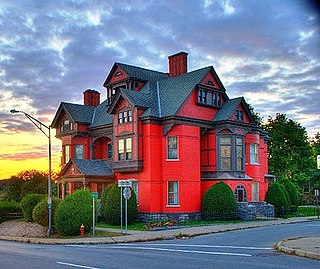
Montgomery County is a county in the U.S. state of New York. As of the 2020 census, the population was 49,532. The county seat is Fonda. The county was named in honor of Richard Montgomery, an American Revolutionary War general killed in 1775 at the Battle of Quebec.

Cohoes is an incorporated city located in the northeast corner of Albany County in the U.S. state of New York. It is called the "Spindle City" because of the importance of textile manufacturing to its growth in the 19th century. The city's factories processed cotton from the Deep South.

Montezuma is a town in Cayuga County, New York, United States. The population was 1,277 at the 2010 census.
Ilion is a village in Herkimer County, New York, United States. The population was 7,790 at the 2017 census.

Canastota is a village located inside the Town of Lenox in Madison County, New York, United States. The population was 4,556 at the 2020 census.
Fort Plain is a village in Montgomery County, New York, United States. As of the 2010 census, the village population was 2,322. The village is named after a fort built during the American Revolution at the junction of the Mohawk River and its tributary Otsquago Creek.
Fultonville is a village in Montgomery County, New York, United States. The village is named after Robert Fulton, inventor of the steamboat.

Herkimer is a village on the north side of the Mohawk River and the county seat of Herkimer County, New York, United States, about 15 miles (24 km) southeast of Utica. As of the 2020 Census, it had a population of 7,234, and a predicted population of 7,283 on July 1, 2022. It was part of the Burnetsfield Patent and the first colonial settlement this far west in the Mohawk Valley.
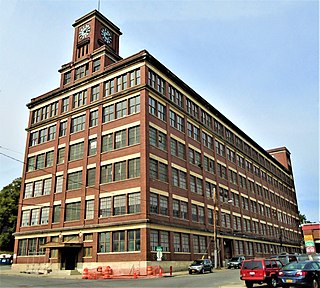
Amsterdam is a city in Montgomery County, New York, United States. As of the 2020 census, the city had a population of 18,219. The city is named after Amsterdam in the Netherlands.
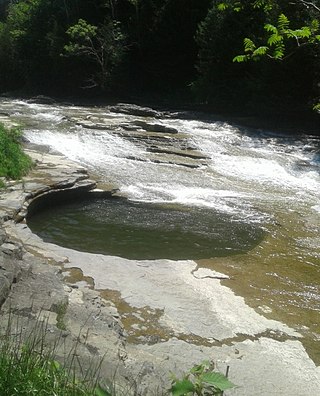
Canajoharie is a town in Montgomery County, New York, United States. The population was 3,730 in 2010. Canajoharie is located south of the Mohawk River on the southern border of the county. The Erie Canal passes along the northern town line. There is also a village of Canajoharie in the town. Both are east of Utica and west of Amsterdam.

Peter Buell Porter was an American lawyer, soldier and politician who served as United States Secretary of War from 1828 to 1829.
Fort Dayton was an American Revolutionary War fort located on the north side of the Mohawk River at West Canada Creek, in what is now Herkimer, New York. A fort had previously been built on the same site during the French and Indian War.

Fort Herkimer was a colonial fort located on the south side of the Mohawk River, opposite the mouth of its tributary West Canada Creek, in German Flatts, New York, United States.
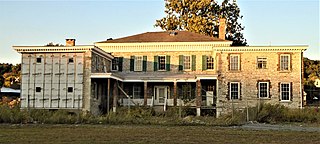
Guy Park, also known as Guy Park State Historic Site or Guy Park Manor, is a house built in 1774 in the Georgian style for Guy Johnson, the Irish-born nephew and son-in-law to Sir William Johnson, 1st Baronet, the British Superintendent for Indian Affairs in colonial New York. Built of limestone, the house was originally situated on a square mile of land on the north side of the Mohawk River and near it for access to water transportation.

The Pennsylvania Canal, sometimes known as the Pennsylvania Canal system, was a complex system of transportation infrastructure improvements, including canals, dams, locks, tow paths, aqueducts, and viaducts. The canal was constructed and assembled over several decades beginning in 1824, the year of the first enabling act and budget items.
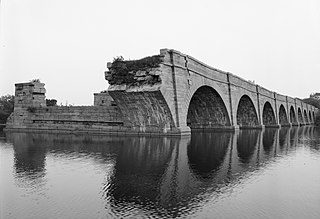
Schoharie Crossing State Historic Site, also known as Erie Canal National Historic Landmark, is a historic district that includes the ruins of the Erie Canal aqueduct over Schoharie Creek, and a 3.5-mile (5.6 km) long part of the Erie Canal, in the towns of Glen and Florida within Montgomery County, New York. It was the first part of the old canal to be designated a National Historic Landmark, prior to the designation of the entire New York State Barge Canal as an NHL in 2017.
Fort Hunter is a hamlet in the Town of Florida in Montgomery County, New York, United States, west of the capital at Albany, on the south bank of the Mohawk River and on the northeast bank of Schoharie Creek.
Niagara Falls Hydraulic Power & Manufacturing Company was an American company, based in Niagara Falls, New York that was the first company to generate hydroelectric power from Niagara Falls in 1882. The company built upon several predecessor companies efforts to construct a canal used for hydraulic mill power. In 1918, the company merged with Niagara Falls Power Company, which later became Niagara Mohawk and in 2002 was acquired by National Grid plc.














